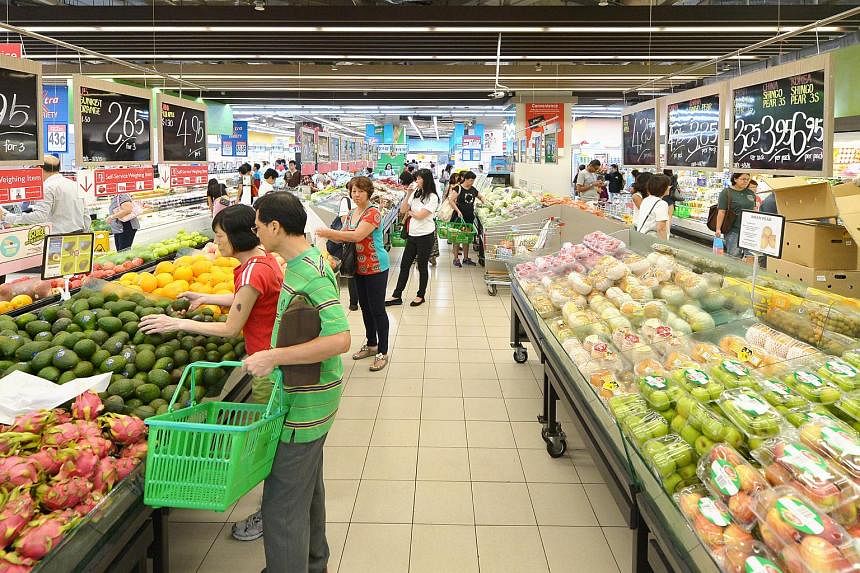SINGAPORE - Inflation came in below zero for the seventh consecutive month in May, marking the longest run of negative inflation in six years.
While the headline number came as no surprise to economists, they were caught off guard by lower-than-expected core inflation, which is seen as a better gauge of everyday expenses.
This was the result of more moderate food and services inflation in May, as well as Budget measures kicking in.
Some economists offer their take on the latest inflation statistics.
Francis Tan, UOB:
One of the reasons for slower food inflation could be due to the recent strength in the Singapore dollar against the Malaysian ringgit, giving a boost to the purchasing power of food wholesalers in Singapore.
That may translate into lower wholesale prices for several food categories (particularly fruits and vegetables). In fact, we think that in next month's inflation report, we may see even lower food inflation.
Downward pressure on both headline and core inflation over the past seven months was due mainly to administrative measures from the government.
This was different from the drivers of deflation in the past where falling prices were due to contraction in aggregate demand and a spike in unemployment rate.
Leong Wai Ho, Barclays:
Despite the downside surprise in core inflation, it continues to be attributable mostly to administrative measures or the supply side (for instance, lower oil prices and lower food prices due to higher supply), which is offsetting the continued rise in labour costs for the time being.
While 2015 average core inflation is likely to come in at the lower end of the MAS's forecast range of 0.5 to 1.5 per cent, with the labour market remaining tight, we believe the MAS will continue to look through the supply-side driven falls in inflation and focus on the prospects for the medium term.
Meanwhile, core inflation is likely to hit an inflection point in the third quarter, as the oil price recovery feeds through to utility tariffs, while food prices face upside risks from El Nino, which could hit regional agricultural output.
Against this backdrop, we continue to expect the MAS to keep policy on hold in October, and would only expect a change in the event of a significant darkening in the growth outlook.
Daniel Wilson and Glenn Maguire, ANZ:
Looking ahead there will likely be further downside pressure to headline inflation. With additional property and COE supply coming to the market, accommodation and transportation costs will likely decline.
However, there might be upward pressure on inflation from El Nino hitting food prices regionally, higher oil prices, and if stable GDP growth offers corporates the opportunity to finally pass on higher costs to consumers.


